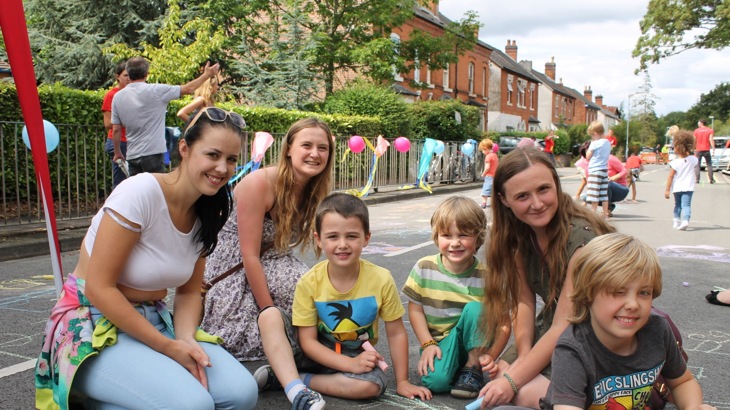In all the excitement over the 1,000 miles of Beelines walking and cycling routes to be built in Greater Manchester, it’s easy to underestimate the importance of the scheme’s 25 proposed filtered Neighbourhoods. These Dutch-inspired areas use filters, such as bollards or planters, which let pedestrians and cycles through, but block access to cars. Filters can be applied throughout a neighbourhood, calming the streets and encouraging people to walk or cycle.

What are filtered neighbourhoods?
The Beelines proposal defines a filtered neighbourhood as: "A neighbourhood where the movement of people is prioritised over the movement of motor vehicles. Typically this is achieved by creating cul-de-sac style access for cars but allowing through traffic for people walking and cycling. This approach creates spaces to play and socialise and enables more green areas to be created."
These Dutch-inspired areas use filters, such as bollards or planters, which let pedestrians and cycles through, but block access to cars. Filters can be applied throughout a neighbourhood, calming the streets and encouraging people to walk or cycle.
Without filtered neighbourhoods making the local road network friendly to people cycling and walking, Beelines is unlikely to create the buzz we all look forward to.
That is because most people will not actually live on a ‘Beeline’ route and will need to use local roads in their neighbourhood to access them. This is a big problem because road safety concerns are the most common reason for people not cycling. In 2017, 62% of adults aged over 18 in England agreed that “it is too dangerous for me to cycle on the roads”.
Many Beelines also use parts of the local road network that are currently rat-runs for passing traffic avoiding the main routes.
Introducing filtered neighbourhoods across the local road network will reduce the volume of traffic and help make these roads safer and more convenient for people to walk and cycle. With creative additions such as colourful zebra crossings or plant pots, they will also make the areas more attractive places to live in and help build the feel-good factor of Beelines.
The design and size of filtered neighbourhoods and the extent to which local people are involved in the decision-making will be critical to increasing cycling and walking levels in these areas.
Stockport Council has developed bold plans for a more widespread filtered neighbourhood as part of Beelines, which would have a real impact on local traffic flow. This could set a precedent for other districts throughout the City Region if the approach is right.
Learning from others
There are some interesting examples to learn from around the country.
Walthamstow embarked on the creation of filtered neighbourhoods as part of its Mini Holland programme, which led to a 16% reduction in motor traffic in the initial area and demonstrated how an ambitious council can start to deliver the environment where walking and cycling can flourish.
Cycle-friendly Cambridge, holding England's cycling top spot with 54% of adults cycling at least once a week in 2017, has naturally and purposefully created filtered neighbourhoods around its city, restricting the ability for traffic to rat-run through residential areas or the city centre. This has created more cycle-friendly local roads that connect to cycle lanes and cycle tracks scattered around the city, to form an extensive and coherent cycle network.
Conversely, Milton Keynes is a notable example of how simply building cycle route infrastructure does not lead to the creation of cycling culture. Despite a Dutch-style cycle network, Milton Keynes recorded only 3% of people commuting by bike in 2011 and 7% who walk. What Milton Keynes shows is that that are other factors that contribute to the creation of cycling culture.
If we want people to walk or cycle we need to make it easier than getting in a car. This means using traffic restraint measures, such as filtered neighbourhoods, which may increase journey times for motorists whilst making it more attractive, safe and pleasant to walk or cycle.
Overcoming barriers
Yet we know from experience that filtered neighbourhoods are not easy schemes to deliver.
It is crucial to work with local communities at every stage of the process to help to communicate the benefits of restricting traffic to local people and businesses. Calmer streets are also more pleasant places for people who walk or cycle to stop off and buy their morning coffee, pick up some groceries or window shop, rather than rushing through by car.
Grassroots engagement was a key part of our work to develop Quietways in London, a network of cycle routes following quieter streets, parks and waterways.
In Newcastle, extensive work with local businesses and residents helped ensure the success of traffic calming and reduction of parking on local streets, while our project in Dumfries, Scotland put communities at the heart of new cycle and walking street designs.
If we are really serious about getting 75% of people living in Greater Manchester active or fairly active by 2025, we need to work with our local communities to discourage local car trips as well as build cycle and walking routes.
That will give Beelines the chance to fly.

